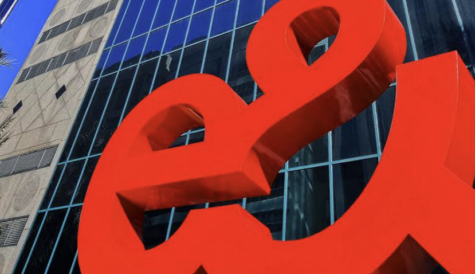Turbo-charging super-aggregation: pay TV in the 2020s
As operators slowly lose exclusivity on content that once locked consumers into the Pay TV offer, they must provide new reasons for consumers to love them. It requires a turbo-charged form of super-aggregation, writes John Moulding.
 What is the raison d’être for pay TV during the rest of this decade? That is a pressing question, as operators slowly lose exclusivity on content that once locked consumers into the Pay TV offer, due to direct-to-consumer studio services and increasing competition from sports streamers.
What is the raison d’être for pay TV during the rest of this decade? That is a pressing question, as operators slowly lose exclusivity on content that once locked consumers into the Pay TV offer, due to direct-to-consumer studio services and increasing competition from sports streamers.
The answer is a turbo-charged version of super-aggregation. Pay TV operators must pull together the best content in one place. And they must become the most trusted of all content discovery agents – the platform that understands us better than anyone else, anticipates our needs, and matches consumers to the content they love.
Carrier billing for onboarded streaming services is a well-documented pay TV value-add. Subscription on/off management is an emerging function that will resonate with consumers. Then there is hard-bundling with discounts. Super-aggregators can stand out if they provide several streaming (and other) services in a single-priced collection where that price is noticeably cheaper than if someone took the content offers individually.
Swisscom recently announced an upgrade to its blue TV experience that sets a high bar for super-aggregation globally, offering all these value-adds. It includes a hard-bundle of four services (Disney+, Paramount+, Sky Cinema and blue Max) at a price that represents a saving of more than 35% compared to if they were bought individually.
There is a consumer console to manage streaming subscriptions, where Swisscom customers get an overview of the streaming services they subscribe to, and where they can add or remove them in a few clicks. All streaming services are charged on the Swisscom bill.
Swisscom promises consumers a whole world of entertainment that “brings together what belongs together”. Hubbl, the forthcoming Australian streaming TV platform announced by Foxtel Group as a standalone brand, has also been articulating the consumer proposition for super-aggregation.
Hubbl views its streaming-focused offer as “the solution to a complex streaming landscape caused by the fabulous explosion of choice in streaming services”. Its messaging adds: “It brings simplicity and ease back to the world of entertainment.”
Complete super-aggregators

Source: Adobe stock
Comprehensive apps provision is important – and a key driver behind the uptake of Android TV Operator Tier, with its access to the Google Play Store. Metrological is among those supporting apps for the RDK community, and there are emerging technologies to port Android applications onto RDK or Linux customer premise equipment (e.g., AndApps from Consult Red, and WyLambda from Wyplay).
All these solutions increase apps choice and availability, and so help operators to be complete, and not just partial, super-aggregators.
Virgin Media in the UK is showing how the super-aggregator role continues to expand. It is among the first to fully integrate FAST channels into the pay TV programme guide. Sky and Netflix demonstrate how a hard-bundle becomes a joint go-to-market proposition, with Sky’s consumer marketing in the UK treating the two brands as equals.
It is worth remembering that pay TV providers are not the only ones with their eye on the super-aggregation prize. Amazon Prime Video made its ambitions clear recently, with Kelly Day, Vice President, International at Prime Video, telling the APOS Bali conference: “Our mission is to be a place where customers can find all their video entertainment under one roof.”
Amazon offers studio streamers within Prime Video Channels and, like pay TV operators, it can take care of single billing.
What Prime Video lacks is broadcast linear TV, so pay TV can differentiate in this space by doubling-down on its relationship with broadcasters and by making the most of features that spin out of broadcast and broadcasters, like start-over TV (e.g., Red Button links into broadcaster VOD services) and Replay TV.
Step forward Switzerland’s Sunrise, and VodafoneZiggo in the Netherlands for their work to update EPG start/end times so they sync with actual programme start/end times. This is not just about improving programme guides – it means a Replay TV user starting a recently recorded show will see what they are expecting: the start of the show.
This is a practical building block to being a better super-aggregator, and Magenta Telekom is now deploying the same technology.
Meanwhile, studio and channel group streamers are also pulling more things into one place. Warner Bros. Discovery is adding live sports to its Max streaming service in the U.S. (the home of HBO Originals and Harry Potter). Paramount Global is fusing the My5 BVOD service from Channel 5 with the Pluto TV FAST service in the UK next year.
Disney is set to test Disney+ with Hulu as a single experience. NBCUniversal’s Peacock includes a dedicated Hallmark Channel hub, and Streamz is creating a Paramount+ branded area on its Belgian streaming platform.
In Australia, Seven Network aggregates streaming channels from third-parties like Bloomberg Television to NBCUniversal in its 7plus BVOD service, as well as dozens of FAST channels. In MENA, premium video streamer OSN+ is going to combine with Anghami, a leading music and podcast streaming platform.
More to offer
In all cases, the result is a streaming destination with more to offer – and so more reasons to stay for longer. The German broadcasters ARD and ZDF even share a recommendation system for their separate streaming services, so an ARD viewer could be shown ZDF content and vice versa.
Without sharing a catalogue or service, they hope to increase their share of digital time. ZDF and ARD are offering universal content discovery, albeit on a very small scale – and that is a function previously reserved for platforms.
Pay TV operators can embrace all these developments, anyway, as the aggregator of mini-aggregators. And if they want, operators can diversify their video super-aggregation role into a more diversified entertainment offer that includes music apps, fitness applications, games and gamified content.
If they have a broadband offer, and intend to offer Smart Home applications, integration of the entertainment and Smart Home UX becomes a potential value-add.
It is hard to imagine that television games or the ability to watch a babycam via an operator UI will deliver pay TV growth, or prevent subscriber declines, unless video super-aggregation foundations are rock solid. And on the TV front, everything rests on remaining the ‘home platform’ in a market full of platforms.
The ‘reason for being’ for pay TV this decade is to be the first place viewers look, the place where they make most of their viewing decisions, and the place where viewing decisions bring the most satisfaction. It must be the place where consumers find most of what they wish for, from multiple sources, and where the act of finding and viewing are both UX pleasures. It must be the place where viewers start and end their content journey on most occasions.
It sounds easy if you say it quickly. The challenge, as ever, is execution.



